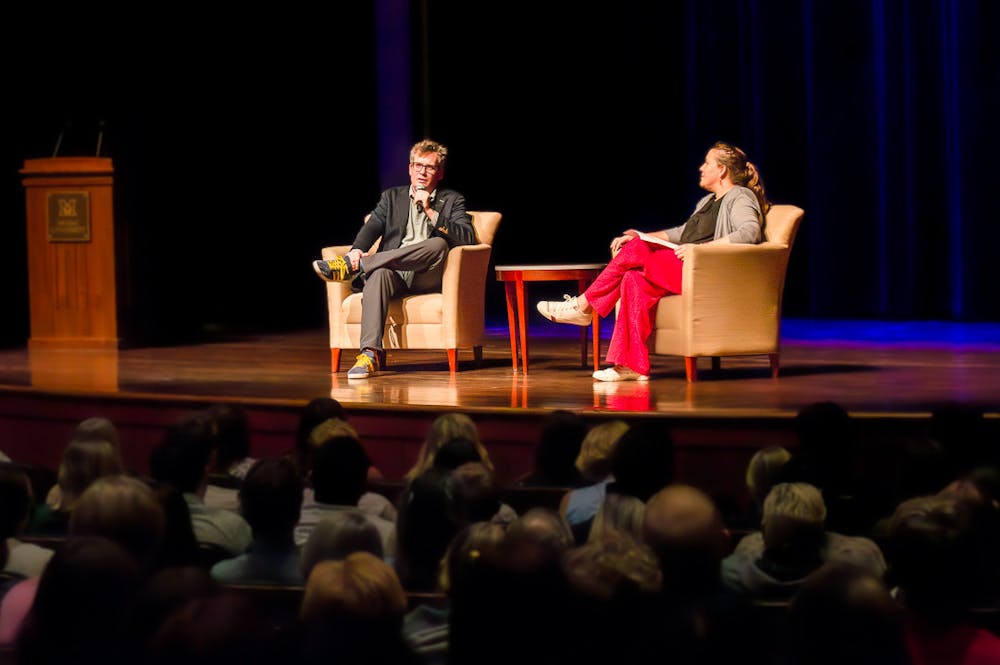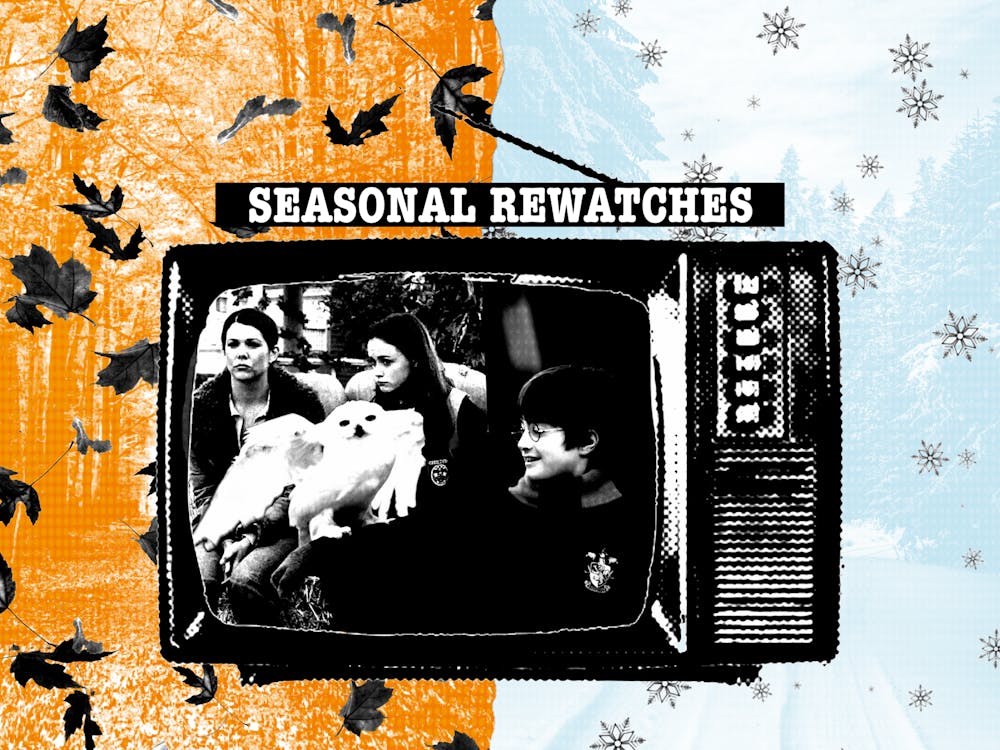On Sept. 23, John Green came to Miami University for his “How The World Ends” lecture at Hall Auditorium. Tickets were sold out, and students were highly anticipating his arrival.
These lectures tend to draw attention from students if it’s someone well-known for something, such as Dan Povenmire for “Phineas and Ferb” or John Green’s brother Hank Green from “Crash Course” on YouTube.
Joined by moderator Rosemary Pennington during the session, Green was met with applause as he walked onto the stage.
Green talked about what brought him to the idea of the world ending. He referenced an essay about this subject previously written due to the COVID-19 pandemic. He thought the world would end at that time, but it didn’t.
He goes back to different times in history when people faced hardships and thought the same thing (ex: The Black Death).
“I was going back to these precedents to see how we survived, what we survived because I needed to feel that,” said Green. “I was so terrified.”
Green found comfort in the fact that we as humans will end, but it won’t be now. Pennington acknowledges his tendency to make sense of “big, important things” as the through line in his work.
“I’m broadly in favor of humans,” said Green. “I don’t labor under the delusion that we’re not a catastrophe … But I have an argument in all of my work, it’s that humanity is good news.”
When asked about how he makes an intergenerational connection with Gen Z, Green supported this age group with the way we handle things.
“We change the problems we’re anchoring about,” Green said. “We rectify the injustices we’re horrified by, and we tend not to rectify the injustices that we don’t notice or ignore.”
He then goes on to talk about identifying with characters we can relate to, whether that’s a character with brown hair, OCD, or even unpredictable boys, etc.
“There’s a deeper kind of identification where you identify with something in somebody’s soul or … even a fictional character’s personhood in a deeper way,” Green said. “... it’s what I’m trying to find when I’m reading, and … also when I’m writing.”
Enjoy what you're reading?
Signup for our newsletter
His debut novel, “Looking For Alaska,” was a banned book in certain places in the United States. Green is passionate about combating book-banning and spoke about his experience.
“I do not like being called a pornographer,” Green said. “Individual, local misrepresentation of my work.”
Though he was not explicit about what part of the book made it banned, I do know what he’s talking about (as someone who has read the book).
Green was rather humorous about the situation, telling the audience that being called a pornographer “hurts his feelings.” He maintained this light-hearted attitude throughout the lecture.
On the topic of being misrepresented, Pennington asked him how he navigates the demands of internet life, which often consists of misinformation about him.
“It’s really hard,” Green said. “You have to choose to be earnest. It’s so tempting to want to wear the armor of irony when you’re encountering the world … I just have to take off that armor of irony each day and feel what there is to feel in the world.”
In reflecting on the concept of “Claude glass,” Green believes that it is important to be vulnerable even if it risks getting hurt.
Following the lecture was a Q&A session between Green and the attendees. Everyone who had a question lined up on both sides of the auditorium to speak through the microphones. My friend and I happened to be in that line — we were so excited.
Some of the people before me started off their questions saying they were nervous. I was nervous too. I had sketched a couple of pictures of Green in hopes of being able to show him. When it was my turn to go I couldn’t believe this was happening.

One of the pieces of fan-art made for John Green by Josie Zimmerman.
“Hi,” I said.
“Hi — oh, hi!” said Green, turning from the other side of the room. The audience laughed.
“Hi, I’m Josie, I can’t believe you’re actually real and not on a screen.”
“You and me too, man.”
The audience laughed again.
My question was about a trope Green used in at least three of his stories — the “Manic Pixie Dream Girl”— or, in Augustus Waters’ case, the “Manic Pixie Dream Boy.” This character exists to inspire the protagonist, helping the character find joy, adventure, or a new point of view on life.
I wanted to know what his fascination is with this idea.
“Well, I hate ‘Manic Pixie Dream Girls,’ is the short answer,” said Green.
He used books like “Paper Towns” and “Looking For Alaska” to talk about the way boys romanticize girls, and in doing so they believe they’re doing them a favor. But, to Green, to romanticize someone is to treat them as anything but a person.
“It’s quite dehumanizing to be romanticized. You’re still being thought of and being treated as something other than a person,” he said.
The audience started snapping their fingers in agreement with his statement. Earlier in the show, someone started snapping their fingers and at this point in the session, it stuck.
“I made fanart of you, I was wondering if you wanted to see it,” I said.
“Yeah, of course,” said Green. “Thank you.”
I walked up to the stage to hand him my sketches.
“Oh my God is this for me?”
“Yeah!”
“Oh, that’s lovely! It’s so good! Thank you,” he told me.

Another piece of fan-art for John Green by Josie Zimmerman.
This was one of many wholesome interactions between Green and his fans. Others at the mic requested video messages for their friends and family, while others told him his work helped them through personal struggles.
Overall, the lecture and Q&A were well-received by the audience, and everyone left the building in good spirits. Junior Carly Goodman spoke about it saying nothing but good things about the event.
“I thought it was really impactful,” Goodman said. “I really like hearing his perspective on the world and seeing it through his eyes.”
Goodman read “The Fault In Our Stars” in middle school and attended Hank Green’s lecture two years back, and believes that John Green uses his platform for something meaningful.
“He’s known for a lot of different things, mostly his books, but the fact that … he was saying the biggest accomplishment of his career was lowering [tuberculosis] TB medication by $2, it’s cool that is one.”




